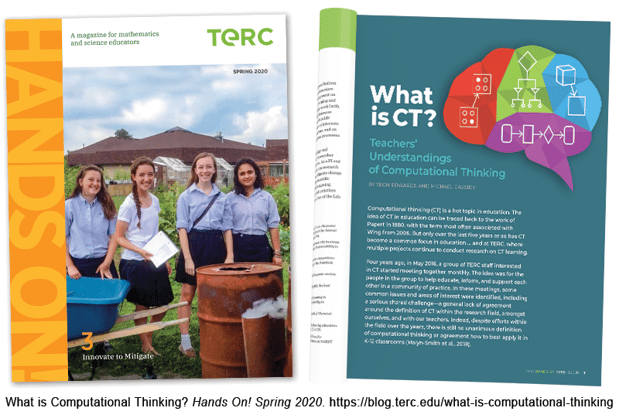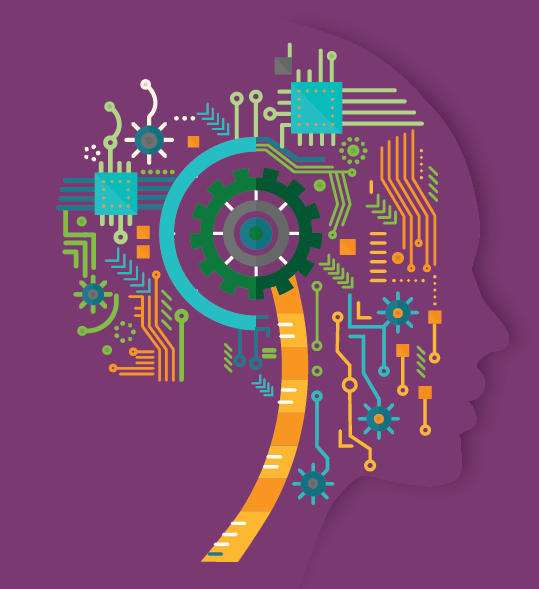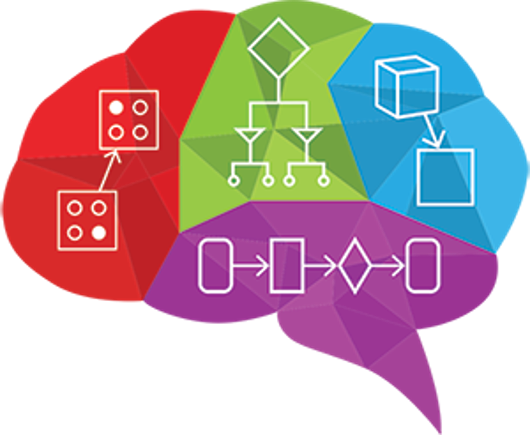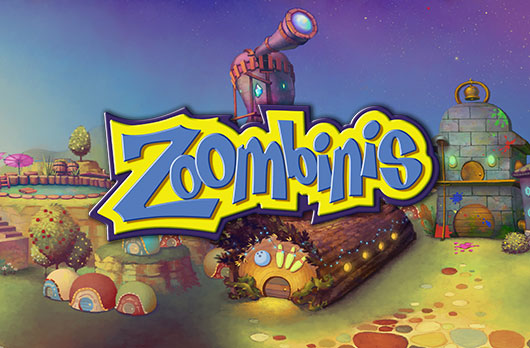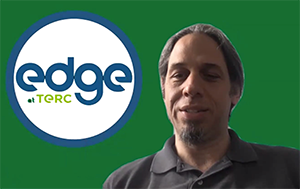TERC Blog
Computational Thinking and Executive Function: Where Neurodiversity Shines
Educators understand more and more these days that each student’s brain works a little bit differently. Every learner has unique cognitive strengths (or assets) and some weaknesses (or deficits). Parents know that each child learns and plays differently too. Some children express themselves readily through art or music, some are fascinated by the natural world outdoors, while others are delighted by an entire afternoon with a difficult jigsaw puzzle.
As schools serve increasingly diverse student populations, the need for educators to differentiate learning activities to meet the needs of their students is growing tremendously (Immordino-Yang & Darling-Hammond, 2018). Adapting a lesson to engage all students—including those with learning issues related to neurology (e.g., ADHD, autism, or dyslexia)—and to keep them persistent and productive in their tasks is not easy. It requires considering the cognitive assets and deficits of each child to leverage learners’ strengths to support them while they power through tougher assignments. Educators  need support to deliver classroom approaches that are inclusive and draw on the unique strengths of neurodiverse learners (Tomlinson, C. A., & Strickland, 2005). In particular, technology such as video games may play a key role in supporting learners with diverse needs (Goodwin, 2008; Parsons, Leonard, & Mitchell, 2006).
need support to deliver classroom approaches that are inclusive and draw on the unique strengths of neurodiverse learners (Tomlinson, C. A., & Strickland, 2005). In particular, technology such as video games may play a key role in supporting learners with diverse needs (Goodwin, 2008; Parsons, Leonard, & Mitchell, 2006).
Neurodiverse learners’ tendency toward systematic behavior and compulsion for detail, labeled in school as a “learning disability” related to cognitive inflexibility, can be seen as exactly the skillset needed to thrive in a computational world (Abraham, Windmann, Siefen, Daum, & Güntürkün, 2006; Dawson et al., 2007; Schmidt & Beck, 2016; White & Shah, 2011). Many IT companies, such as Microsoft, have specific hiring programs for neurodiverse people, because the companies understand the unique capabilities these employees bring to the table for tasks such as quality assurance and debugging software. Divergent thinking and impulsive reactions that might be seen as disruptive to classrooms could be just what a design team needs to break through a rut in problem-solving.
This overlap between neurodiversity and technology-related problem solving has led our team to study the intersection between Computational Thinking (CT) and Executive Function (EF). These are two “hot areas” in education and may have more in common than first meets the eye. Our current project INFACT (Including Neurodiversity in Foundational and Applied Computational Thinking) developed out of our research observing how students build CT skills from their use of video games, and educators’ reflections on how different types of learners engage with CT. We are now building tools that prepare students for a computational world and also support executive function, so each learners’ unique strengths can shine.
Computational Thinking
Computational Thinking has been discussed in education since the mid 1990s and is now being adopted in many state standards (CSTA, 2017; Shute, Chen & Asbell-Clarke, 2017; Wing, 2006). There are numerous programs aiming to teach CT, from pre-school through adult classes. CT can be thought of as the set of practices used when humans solve problems similarly to how computers solve problems. It involves devising and classifying problems that could have similar solutions, then building sets of instructions (algorithms) for solving groups or classes of problems, rather than solving each new problem from scratch. CT practices include:
-
Problem Decomposition: breaking up a complex problem into smaller, more manageable problems;
-
Pattern Recognition: seeing patterns among problems that may have similar types of solutions;
-
Abstraction: generalizing problems into groups by removing the specific information and finding the core design of each problem; and
-
Algorithmic Thinking: thinking of problem-solutions as a set of general instructions that can be re-used in different settings.
While a natural application of CT is coding (computer programming), there are many learning activities and uses for CT without a computer. When considering CT as a mode of problem-solving, one can see many applications of CT even in daily life. For example, writing a recipe or designing an instruction manual for a piece of equipment is sometimes described as a CT activity. Recipes and manuals could be seen as algorithms—sets of instructions to be implemented by another user.
We would argue, however, that a handwritten recipe card from your grandparent with instructions for their famous sweet and sour chicken (for instance) is not an algorithm, because it does not demonstrate the concept of abstraction that is core to CT. Abstraction is about generalizing instructions (here, a recipe) to provide the basic structure that a user can apply to a variety of contexts. An abstracted recipe (or algorithm) could describe how a chef makes a sweet and sour sauce. In this case, we see the structure:
-
one third something savory
-
one third something tangy
-
one third something sweet
This general pattern is an algorithm that is re-usable with different ingredients. In one case the chef may use soy, lemon, and honey; and in another case they may use herbs, vinegar, and sugar. But even for folks who are not aspiring chefs or computer programmers, CT may be a useful way to think about how our brains work.

Executive Function
Executive Function (EF) is rapidly being recognized as a key area of focus for education for all learners, not just those in special education (Immordino-Yang & Darling-Hammond, 2018; Meltzer, 2018). A neurological description of EF usually includes:
-
Working Memory: how we store information in the short term as we are solving a problem;
-
Cognitive Flexibility: how well we can express and modify our thinking when provided new information; and
-
Inhibitory Control: how well we can squelch tendencies to do things we shouldn’t do, and focus on the things we should do.
Psychologists and educators consider the social and emotional aspects of executive function including emotional regulation, motivation, and metacognitive processes like planning a task, organizing steps and information, and monitoring progress. An educational perspective of EF refers to how these processes play out in the classroom with regard to students’ ability to:
-
retain information while reading a passage or solving a word problem;
-
express their thinking and refine their ideas with experience;
-
focus and navigate their way through a task; and
-
manage frustration and regulate emotions.
CT and Executive Function
Over the past several years, our team has been studying how learners in grades 3-8 build CT practices through games such as TERC’s popular logic puzzle game, Zoombinis (available at terc.edu/zoombinis). We also partnered with a Massachusetts school district in a Research-Practice Partnership to infuse CT into their classroom curriculum for grades 3-8. Throughout our research, we found teachers observing that some learners who struggled in other subjects became more engaged and more productive when doing CT activities—sometimes even becoming leaders in their class.
The struggles of many learners in school boil down to issues with EF. The practices of CT—breaking down problems into smaller pieces and finding patterns in problems so that they can generalize solutions—are also practices that support EF. They help learners to focus and navigate their way through tasks and to refine their ideas with experience.
We also found that special education teachers were excited by teaching CT, because, as one put it, “These are the problem-solving skills I always try to teach our kids, and now I have words for it. And I have a way to embed it right in the curriculum.” Teachers with English Language learners noted the same thing: CT helped them support their learners by making learning explicit. Teachers saw this type of success spill over into other areas by the building of student confidence and social capital as well as academic skills. These observations led us to study the intersection between EF and CT.
Examples of How to Support EF in CT
CT can be seen as useful strategies for solving problems of all kinds, particularly when encountering similar problems or tasks over and over again. Calling out and emphasizing CT practices may help support EF in other areas.

For a simple illustration, let’s think about solving a jigsaw puzzle. Most people who have done a few puzzles establish a set of routines or repeatable procedures—algorithms—when they sit down to do a new puzzle. Steps for building, using, and modifying those algorithms relate to CT practices.
Decomposition
A 1,000-piece jigsaw puzzle may seem like a daunting task at first, but when you break it up into sub-tasks it becomes more manageable. There are many ways puzzle solvers decompose the problem, such as working on the edge first before tackling the interior, or choosing one region of the puzzle to work on at a time.
Pattern Recognition
Many people sort pieces by color, while others look at the shapes of pieces and the number of “innies” and “outies”. These patterns help the problem become more manageable and provide information that makes the puzzle solution more apparent.
Abstraction
Puzzle solvers may begin to generalize about types of pieces, for example by collecting all those that have “outies” side by side before finding pieces that exactly fit together. In this systematic method, the solver doesn’t have to try each piece every time; they only have to start by finding pieces that fit the general category of “outie”.
Algorithmic Thinking
An expert jigsaw puzzler might always put the edge together first, then group by color, then sort those piles by shape before they assemble. Their problem-solution can be thought of as a set of general instructions that can be re-used in different settings and that helps them develop fluency in puzzle solving.
These same practices can be thought of as ways to support EF in problem solving. Table 1 shows the relationship between CT practices, jigsaw puzzle-solving activities, and EF.

Designing Supports for Neurodiverse Learners
INFACT is using these ideas to design, implement, and study a comprehensive and inclusive CT program to support teachers and students for grades 3-8. It focuses on the cognitive assets of neurodiverse learners and builds in supports for learners with a wide variety of differences in attention, metacognition, and self-regulation. The materials engage learners’ EF within CT activities to help make learners’ thinking visible and their problem-solving productive. Learn more at https://www.terc.edu/projects/infact/
For example, we are building a flashlight tool that highlights relevant information that a learner might not be attending to, so that they can focus on the salient information in an activity. We are designing graphical organizers that help learners keep track of necessary information, removing the load on their working memory, and helping them organize the information in ways that make meaning. We are also providing an expression tool that helps learners make their implicit thinking visible, so they can see exactly what they’ve done in one task and re-use similar strategies for future problem solving.
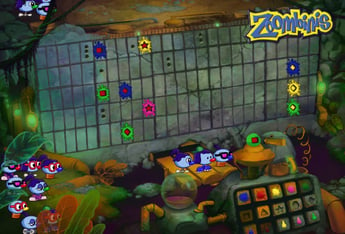
Currently we are designing these supports within digital learning activities, such as games like Zoombinis, so that we will be able to use data mining algorithms to make the supports adaptive. We are building models to detect when students are getting overly frustrated or bored and where in the activities they are no longer productive. When students persist unproductively, it is called wheel-spinning and can lead to disengagement. By detecting in real-time the “trigger” points just before wheel-spinning starts, we are planning to intervene with a “just-in-time” support—like suggesting a strategy they’ve used previously, highlighting useful information they might be missing, or suggesting they take a break and come back after re-energizing. Finding ways to react to each learner’s levels of engagement and potential wheel-spinning through automated data mining detectors will allow us to support individual learners’ unique needs.
CT activities offer unique opportunities to support EF, and in turn by supporting EF we strive to improve learners’ CT. This symbiosis of these two areas may show us a way to help create a world where learners with many different cognitive assets and challenges will thrive. And where our society will benefit from the creativity and intelligence that all learners have to offer.
Download Hands On! Fall 2020
Acknowledgements
The author is grateful for generous funding from the National Science Foundation’s Division on Research and Learning and the US Department of Energy’s Education Innovation and Research programs for ongoing funding in this area. This work would not be possible without the talents and contributions of the EdGE at TERC team, and the many students and teachers with whom we’ve worked.
Author
Jodi’s academic background includes an MA in Math, an MSc in Astrophysics, and a PhD in Education. Early in her career, Jodi dreamed of being an astronaut and went to Houston where she was an onboard software verification analyst for IBM during the first 25 missions of the space shuttle. Later Jodi taught Physics and Astrophysics to some of the brightest students in the country at the laboratory school at University of Illinois. In 1993, she came to TERC where she led several science education projects involving curriculum development, professional development of teachers, and educational research. In 2009, she co-founded EdGE with her colleagues to study how game-based learning can transform science education.
References
Abraham, A., Windmann, S., Siefen, R., Daum, I., & Güntürkün, O. (2006). Creative thinking in adolescents with attention deficit hyperactivity disorder (ADHD). Child Neuropsychology, 12(2), 111–123.
CSTA K-12 CS Standards (2017). Computer Science Teachers’ Association. Retrieved from https://www.csteachers.org/page/standards.
Dawson, M., Soulières, I., Ann Gernsbacher, M., & Mottron, L. (2007). The level and nature of autistic intelligence. Psychological Science, 18(8), 657–662.
Goodwin, M. S. (2008). Enhancing and accelerating the pace of autism research and treatment: The promise of developing innovative technology. Focus on Autism and Other Developmental Disabilities, 23(2), 125–128.
Immordino-Yang, M. H., Darling-Hammond, L., & Krone, C. (2018). The brain basis for integrated social, emotional, and academic development. Aspen Institute, National Commission on Social, Emotional, and Academic Development. https://www.aspeninstitute.org/publications/the-brain-basis-for-integrated-social-emotional-and-academic-development/
Meltzer, L. (2018). Creating strategic classrooms and schools: Embedding executive function strategies in the curriculum. In Executive function in education: From theory to practice. Meltzer, L. (Ed). Guilford Publications.
Parsons, S., Leonard, A., & Mitchell, P. (2006). Virtual environments for social skills training: Comments from two adolescents with autistic spectrum disorder. Computers & Education, 47(2), 186–206.
Shute, V. J., Sun, C., & Asbell-Clarke, J. (2017). Demystifying computational thinking. Educational Research Review, 22, 142–158.
Tomlinson, C. A., & Strickland, C. A. (2005). Differentiation in practice: A resource guide for differentiating curriculum, grades 9-12. ASCD.
White, H. A., & Shah, P. (2011). Creative style and achievement in adults with attention-deficit/hyperactivity disorder. Personality and Individual Differences, 50(5), 673–677.
Wing, J. M. (2006). Computational thinking. Communications of the ACM, 49(3), 33–35.

